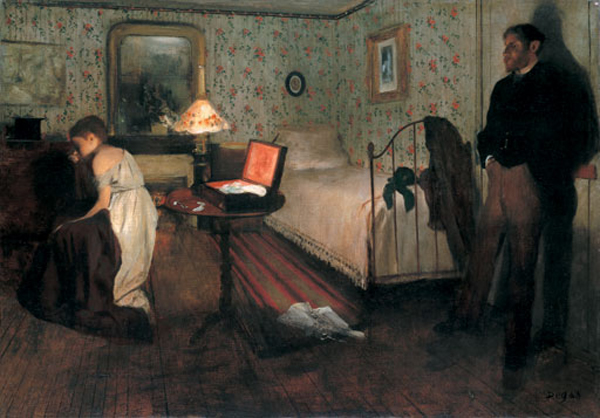Degas’ Intérieur presents a highly charged emotional scene, yet its ambiguous narrative has perplexed scholars and viewers alike. What can we imagine is the purpose of representing this tense situation? Is this a fantasy? A depiction from novel or poem?
Degas called this his genre painting, but genre subjects are everyday people and ordinary life. Can we then assume this is just a mere daily occurrence of victimizing women? We do not have the privilege of knowing their relationship. And Degas does not provide an absolute answer to the painting’s meaning.
Has she turned away from the man, or does she know he is there? Is he a client and she a very young prostitute? The room appears to be hers, but perhaps it is just rented. The seriousness and darkness created by the shadows would suggest this is not a playful scene. Her state of undress with a man standing aggressively at the door, coupled with its nickname since the early 20th century The Rape, has led many to conclude that the scene depicts the aftermath of an assault.

